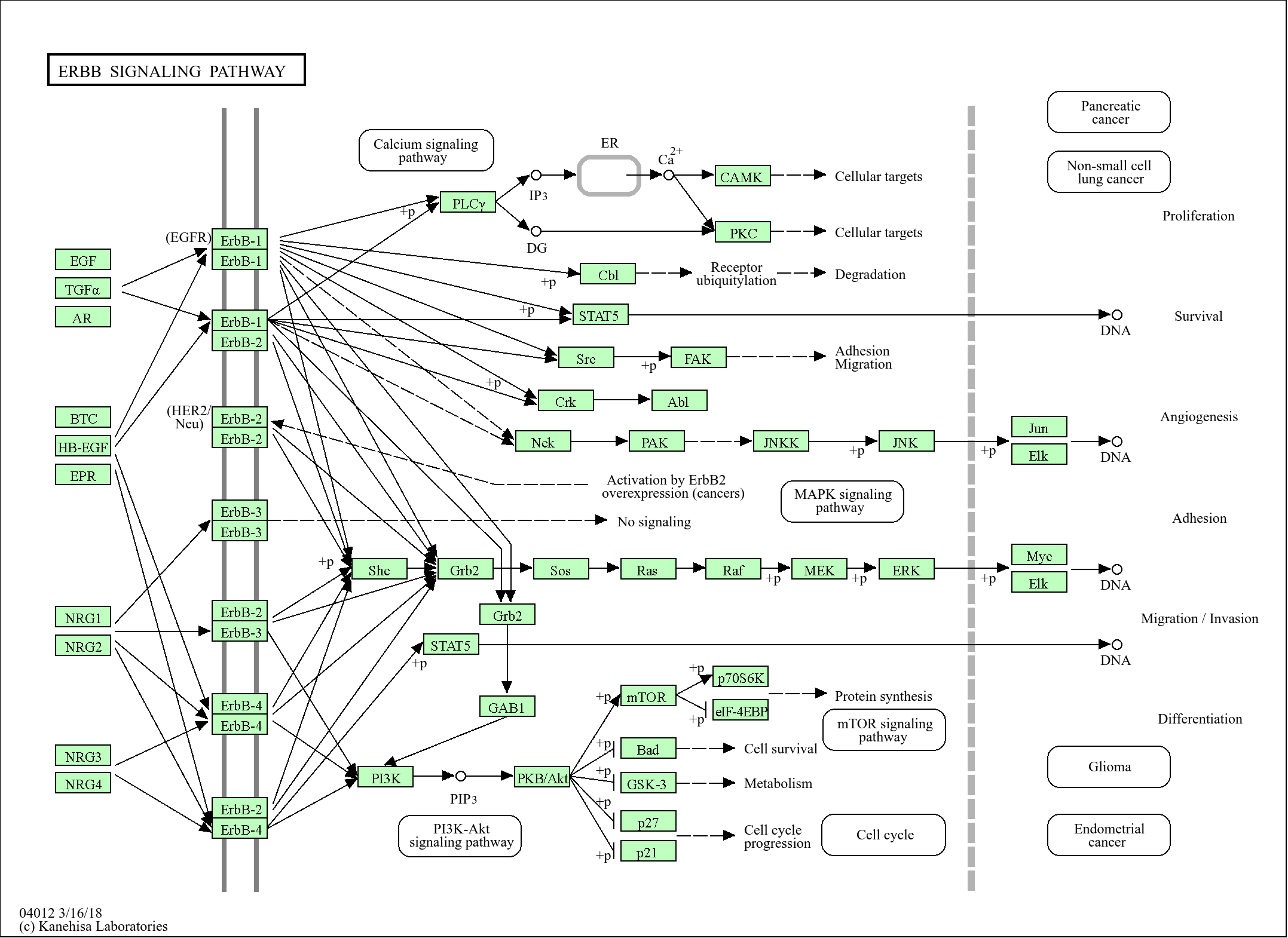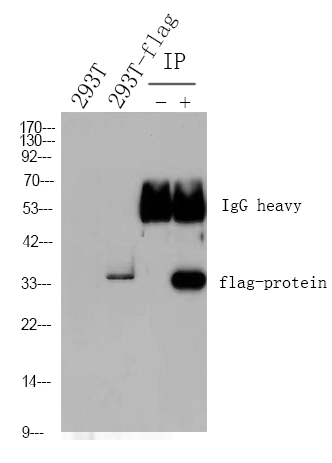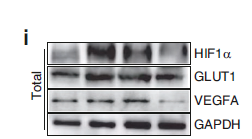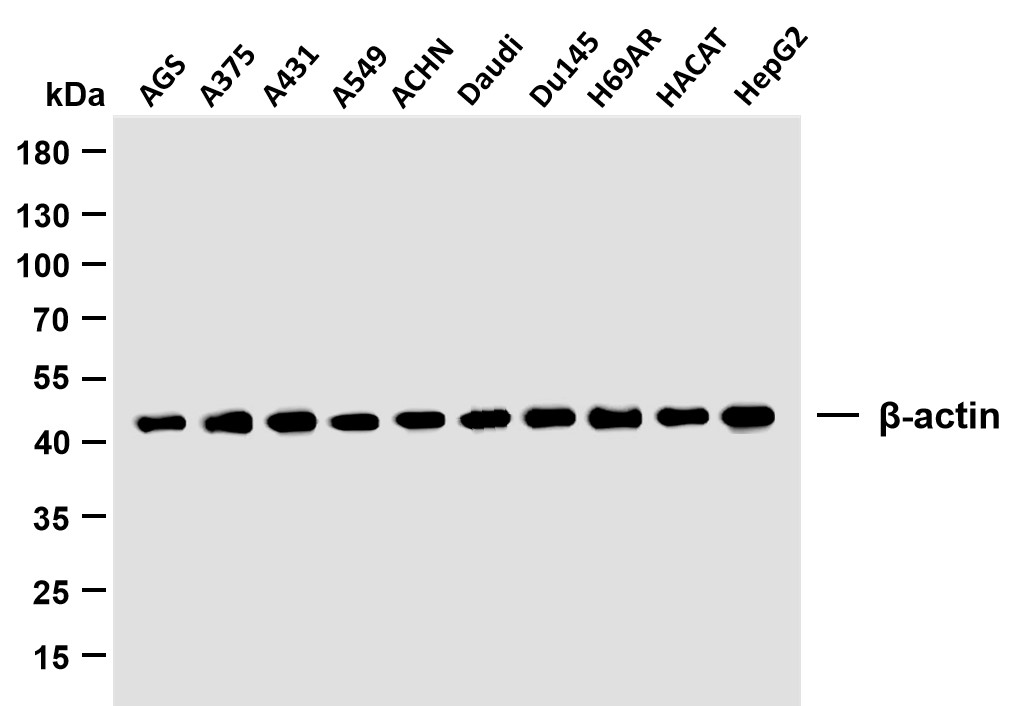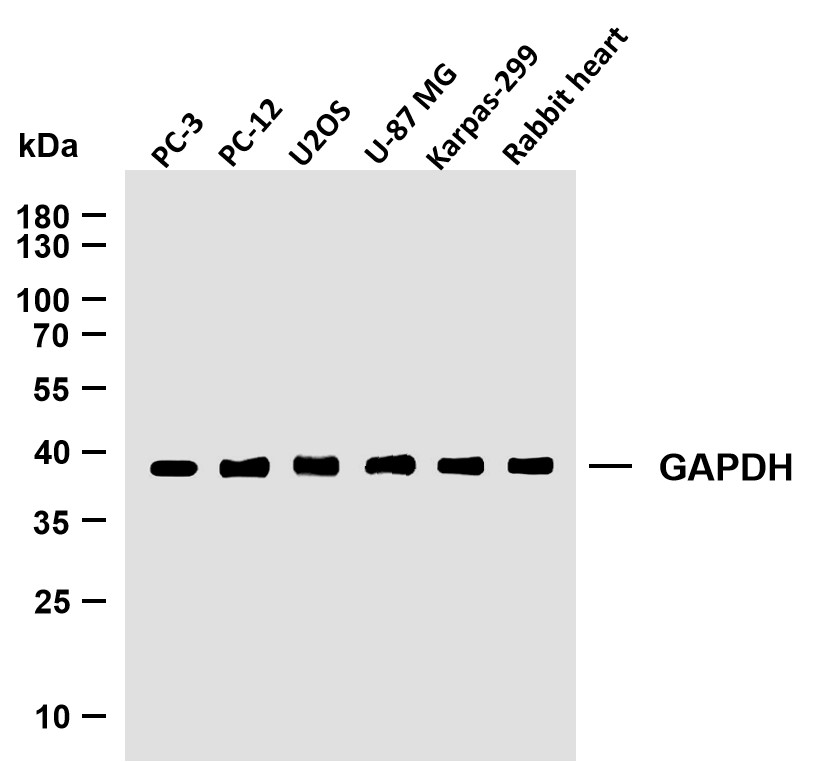
Catalog: YM8689
Size
Price
Status
Qty.
200μL
$600.00
3 weeks
0
100μL
$340.00
3 weeks
0
40μL
$190.00
3 weeks
0
Add to cart


Collected


Collect
Main Information
Target
AMPKα1/2
Host Species
Rabbit
Reactivity
Human, Mouse, Rat
Applications
WB, IF, ELISA
MW
62kD,64kD (Calculated)
62kD (Observed)
Conjugate/Modification
Phospho
Detailed Information
Recommended Dilution Ratio
WB 1:2000-1:10000; IF 1:200-1:1000; ELISA 1:5000-1:20000;
Formulation
PBS, 50% glycerol, 0.05% Proclin 300, 0.05%BSA
Specificity
AMPK α1/2 (Phospho-Thr183/Thr172) Antibody detects endogenous levels of Tau protein only when phosphorylated at Thr183/Thr172.The name of modified sites may be influenced by many factors, such as species (the modified site was not originally found in human samples) and the change of protein sequence (the previous protein sequence is incomplete, and the protein sequence may be prolonged with the development of protein sequencing technology). When naming, we will use the "numbers" in historical reference to keep the sites consistent with the reports. The antibody binds to the following modification sequence (lowercase letters are modification sites):LRtSC
Purification
Protein A
Storage
-15°C to -25°C/1 year(Do not lower than -25°C)
MW(Calculated)
62kD,64kD
MW(Observed)
62kD
Modification
Phospho
Clonality
Monoclonal
Clone Number
PT0920R
Isotype
IgG,Kappa
RRID
AB_3712464
Related Products
Antigen&Target Information
Specificity:
AMPK α1/2 (Phospho-Thr183/Thr172) Antibody detects endogenous levels of Tau protein only when phosphorylated at Thr183/Thr172.The name of modified sites may be influenced by many factors, such as species (the modified site was not originally found in human samples) and the change of protein sequence (the previous protein sequence is incomplete, and the protein sequence may be prolonged with the development of protein sequencing technology). When naming, we will use the "numbers" in historical reference to keep the sites consistent with the reports. The antibody binds to the following modification sequence (lowercase letters are modification sites):LRtSC
show all
Gene Name:
AAPK1/AAPK2
show all
Protein Name:
5'-AMP-activated protein kinase catalytic subunit alpha-1/2
show all
Other Name:
PRKAA1 ;
AMPK1 ;
5'-AMP-activated protein kinase catalytic subunit alpha-1 ;
AMPK subunit alpha-1 ;
Acetyl-CoA carboxylase kinase ;
ACACA kinase ;
Hydroxymethylglutaryl-CoA reductase kinase ;
HMGCR kinase ;
Tau-protein kinase PRKAA1 ;
PRKAA2 ;
AMPK ;
AMPK1 ;
5'-AMP-activated protein kinase catalytic subunit alpha-1 ;
AMPK subunit alpha-1 ;
Acetyl-CoA carboxylase kinase ;
ACACA kinase ;
Hydroxymethylglutaryl-CoA reductase kinase ;
HMGCR kinase ;
Tau-protein kinase PRKAA1 ;
PRKAA2 ;
AMPK ;
show all
Database Link:
Background:
The protein encoded by this gene belongs to the ser/thr protein kinase family. It is the catalytic subunit of the 5'-prime-AMP-activated protein kinase (AMPK). AMPK is a cellular energy sensor conserved in all eukaryotic cells. The kinase activity of AMPK is activated by the stimuli that increase the cellular AMP/ATP ratio. AMPK regulates the activities of a number of key metabolic enzymes through phosphorylation. It protects cells from stresses that cause ATP depletion by switching off ATP-consuming biosynthetic pathways. Alternatively spliced transcript variants encoding distinct isoforms have been observed. [provided by RefSeq, Jul 2008],
show all
Function:
Catalytic activity:ATP + a protein = ADP + a phosphoprotein.,cofactor:Magnesium.,enzyme regulation:Binding of AMP results in allosteric activation, inducing phosphorylation on Thr-174 by STK11 in complex with STE20-related adapter-alpha (STRAD alpha) pseudo kinase and CAB39. Also activated by phosphorylation by CAMKK2 triggered by a rise in intracellular calcium ions, without detectable changes in the AMP/ATP ratio.,Function:Responsible for the regulation of fatty acid synthesis by phosphorylation of acetyl-CoA carboxylase. It also regulates cholesterol synthesis via phosphorylation and inactivation of hormone-sensitive lipase and hydroxymethylglutaryl-CoA reductase. Appears to act as a metabolic stress-sensing protein kinase switching off biosynthetic pathways when cellular ATP levels are depleted and when 5'-AMP rises in response to fuel limitation and/or hypoxia. This is a catalytic subunit.,sequence Caution:Translation N-terminally shortened.,similarity:Belongs to the protein kinase superfamily.,similarity:Belongs to the protein kinase superfamily. CAMK Ser/Thr protein kinase family. SNF1 subfamily.,similarity:Contains 1 protein kinase domain.,subunit:Heterotrimer of an alpha catalytic subunit, a beta and a gamma non-catalytic subunits. Interacts with FNIP1 and FNIP2.,
show all
Cellular Localization:
Cytoplasm . Nucleus . In response to stress, recruited by p53/TP53 to specific promoters. .
show all
Tissue Expression:
Research Areas:
>>FoxO signaling pathway ;
>>Autophagy - animal ;
>>mTOR signaling pathway ;
>>PI3K-Akt signaling pathway ;
>>AMPK signaling pathway ;
>>Longevity regulating pathway ;
>>Longevity regulating pathway - multiple species ;
>>Apelin signaling pathway ;
>>Tight junction ;
>>Circadian rhythm ;
>>Thermogenesis ;
>>Insulin signaling pathway ;
>>Adipocytokine signaling pathway ;
>>Oxytocin signaling pathway ;
>>Glucagon signaling pathway ;
>>Insulin resistance ;
>>Non-alcoholic fatty liver disease ;
>>Alcoholic liver disease ;
>>Hypertrophic cardiomyopathy ;
>>Fluid shear stress and atherosclerosis
>>Autophagy - animal ;
>>mTOR signaling pathway ;
>>PI3K-Akt signaling pathway ;
>>AMPK signaling pathway ;
>>Longevity regulating pathway ;
>>Longevity regulating pathway - multiple species ;
>>Apelin signaling pathway ;
>>Tight junction ;
>>Circadian rhythm ;
>>Thermogenesis ;
>>Insulin signaling pathway ;
>>Adipocytokine signaling pathway ;
>>Oxytocin signaling pathway ;
>>Glucagon signaling pathway ;
>>Insulin resistance ;
>>Non-alcoholic fatty liver disease ;
>>Alcoholic liver disease ;
>>Hypertrophic cardiomyopathy ;
>>Fluid shear stress and atherosclerosis
show all
Signaling Pathway
Cellular Processes >> Transport and catabolism >> Autophagy - animal
Cellular Processes >> Cellular community - eukaryotes >> Tight junction
Organismal Systems >> Endocrine system >> Insulin signaling pathway
Organismal Systems >> Endocrine system >> Glucagon signaling pathway
Organismal Systems >> Endocrine system >> Adipocytokine signaling pathway
Organismal Systems >> Endocrine system >> Oxytocin signaling pathway
Organismal Systems >> Aging >> Longevity regulating pathway
Organismal Systems >> Aging >> Longevity regulating pathway - multiple species
Organismal Systems >> Environmental adaptation >> Circadian rhythm
Environmental Information Processing >> Signal transduction >> Apelin signaling pathway
Environmental Information Processing >> Signal transduction >> FoxO signaling pathway
Environmental Information Processing >> Signal transduction >> PI3K-Akt signaling pathway
Environmental Information Processing >> Signal transduction >> AMPK signaling pathway
Environmental Information Processing >> Signal transduction >> mTOR signaling pathway
Reference Citation({{totalcount}})
Catalog: YM8689
Size
Price
Status
Qty.
200μL
$600.00
3 weeks
0
100μL
$340.00
3 weeks
0
40μL
$190.00
3 weeks
0
Add to cart


Collected


Collect
Recently Viewed Products
Clear allPRODUCTS
CUSTOMIZED
ABOUT US
Toggle night Mode
{{pinfoXq.title || ''}}
Catalog: {{pinfoXq.catalog || ''}}
Filter:
All
{{item.name}}
{{pinfo.title}}
-{{pinfo.catalog}}
Main Information
Target
{{pinfo.target}}
Reactivity
{{pinfo.react}}
Applications
{{pinfo.applicat}}
Conjugate/Modification
{{pinfo.coupling}}/{{pinfo.modific}}
MW (kDa)
{{pinfo.mwcalc}}
Host Species
{{pinfo.hostspec}}
Isotype
{{pinfo.isotype}}
Product {{index}}/{{pcount}}
Prev
Next
{{pvTitle}}
Scroll wheel zooms the picture
{{pvDescr}}

